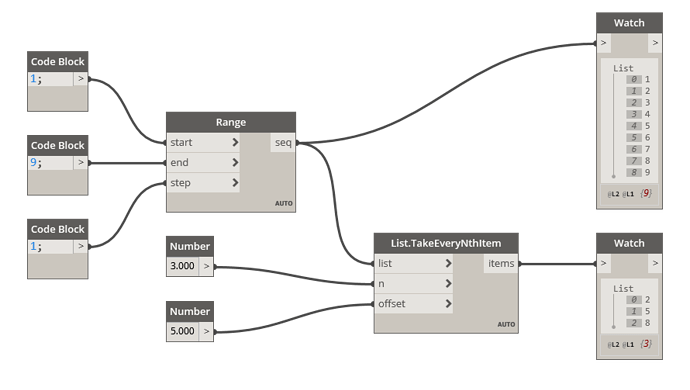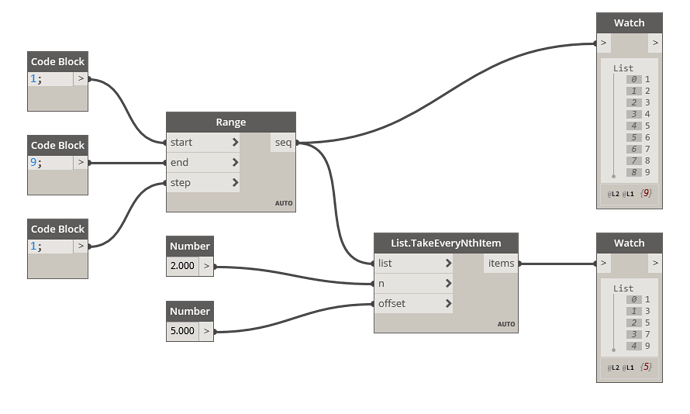I am a beginner of Dynamo, and wondering how the List.TakeEveryNthItem works. I have read the dictionary and searched the google and still don’t get how the offset work.
When I got a list
1,2,3,4,5,6,7,8,9
n=3, offset=5,
I saw some forums said, it offset the list by the remainder (which I don’t know remainder means subtract or divide)
Because I am not sure how it works, so I list out all the “possible lists” after offset:
X,X,1,2,3,4,5,6,7,8,9,
X,X,X,1,2,3,4,5,6,7,8,9
X,X,X,X,X,1,2,3,4,5,6,7,8,9
and the respective outputs are:
1,4,7
3,6,9
1,4,7
But it turns out the output is 2,5,8
Please helps to explain how this block works.
Really Thanks~




